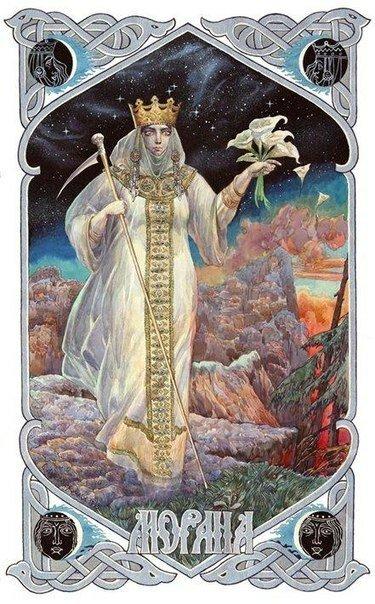
Marzanna
The peoples who lived on the Vistula, like other Slavs before Christianization in 966, had their own belief system based on a polytheistic tradition. These deities most often personified various forces of nature. We can say that this religion was also distinguished by significant diversity - depending on the castles and specific regions, other Slavic gods were of paramount importance. The peoples who later formed the Polish nation before Christianization did not accept a single culture. Its study today is extremely difficult due to the illiteracy of the Slavs. Unlike the ancient Greeks or Romans, who lived much earlier, they did not leave any written evidence, therefore, unfortunately, today historians can rely mainly on what remains in the folk tradition or on the records of the first Christian chroniclers.
One of the traditions of this type, which continues continuously from pagan times to the present day, is associated with the Slavic goddess of winter and death, known as Marzanna, or otherwise Marzana, Morena, Moran. She was considered a demon, and her followers feared her, personifying her in the form of pure evil. She was a horror for young children who did not obey their parents, and for the mythical lady of the country, where every person will end up after his death. The origin of the name Marzanne is associated with the proto-Indo-European element "mar", "pestilence", which means death. The goddess is often found in folklore and fiction as one of the most popular antagonists of Slavic culture.
The ceremonies in honor of Marzanne were unheard of, but few famous people worshiped the goddesses of death. This was due to winter, a time when life became much more difficult. People were happy when the spring equinox finally arrived on March 21st. The holiday that was held at that time in Central Europe is called Dzharymai. From that day on, the day became longer than the night, and therefore, symbolically, in the annual cycle, darkness gave way to light and good. Therefore, these holidays were joyful - the Slavic peoples danced and sang all night.
The culmination of the rituals over time was the ritual of burning or melting a puppet with the image of Marzanne. It was supposed to symbolize protection from an evil demon and negative memories of a difficult winter, as well as awaken a warm and friendly spring. Kukkis were most often made from hay, which was wrapped in linen to symbolize a female figure. Sometimes a drowned man prepared in this way was decorated with beads, ribbons or other adornments. Interestingly, this practice proved to be stronger than attempts at Christianization. The priests have repeatedly tried to eradicate this pagan tradition among the Polish population, but the inhabitants of the area on the Vistula River, with the tenacity of a maniac, created their own puppets and drowned them in local waters. This custom played a special role in Silesia, where it is practiced in the largest number of places. Polish chronicler Jan Dlugosz, who lived in the XNUMX century, mentions the name of Marzanna, describing her as a Polish goddess and comparing her to the Roman Ceres, who, interestingly, was the goddess of fertility. To this day, events are held on the day of the vernal equinox, when Marzanna is symbolically melted or burned, for example, in Brynica, which today is part of the Silesian city.
Topeni Marzanny
Examples of melting Marzanny (Topienie Marzanny. Miasteczko ląskie, 2015 - source wikipedia.pl)
Leave a Reply